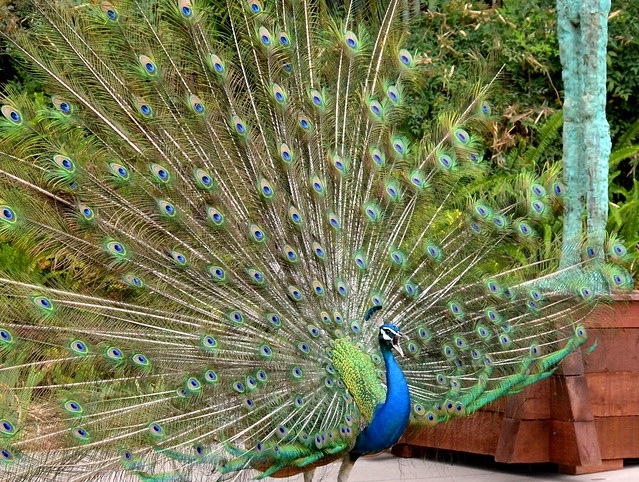“When you feel small and invisible
or stretched-too-thin-and-all-used up,
when life feels too hard to live
and pain feels too much to bear,
when guilt and shame and
self-condemnation feel too heavy to carry,
go outside and stand barefoot
in the stardust-speckled dirt
with your face tilted up to the universe
and whisper to your wounded heart,
'This is not how my story ends.
There is so much more to life than this moment,
these hours, this day, this season of my life.
It's my story. I get to choose.
It doesn't end here;'
And then take your pen in hand
and write the rest of your gorgeous,
shredded, pasted-back-together story
however you choose to write it.
And remember, you're not alone.
We're all writing our own jacked up stories
our own way, too.
Welcome to our tribe of misfits and outcasts
and rebels and dreamers.
We are the story-weavers.
And we're all on this ride through the galaxy together.”
―
THE NEWS IS THAT THE NEWS MEDIA IS MOSTLY NARRATIVE: News you might have missed.
Tesla blamed drivers for failures of parts it long knew were defective -Reuters Investigates
Reuters Investigates: “Wheels falling off cars at speed. Suspensions collapsing on brand-new vehicles. Axles breaking under acceleration. Tens of thousands of customers told Tesla about a host of part failures on low-mileage cars. The automaker sought to blame drivers for vehicle ‘abuse,’ but Tesla documents show it had tracked the chronic ‘flaws’ and ‘failures’ for years…
Jain is one of tens of thousands of Tesla owners who have experienced premature failures of suspension or steering parts, according to a Reuters review of thousands of Tesla documents. The chronic failures, many in relatively new vehicles, date back at least seven years and stretch across Tesla’s model lineup and across the globe, from China to the United States to Europe, according to the records and interviews with more than 20 customers and nine former Tesla managers or service technicians.Individual suspension or steering issues with Teslas have been discussed online and in news accounts for years.
But the documents, which have not been previously reported, offer the most comprehensive view to date into the scope of the problems and how Tesla handled what its engineers have internally called part “flaws” and “failures.” The records and interviews reveal for the first time that the automaker has long known far more about the frequency and extent of the defects than it has disclosed to consumers and safety regulators.
The documents, dated between 2016 and 2022, include repair reports from Tesla service centers globally; analyses and data reviews by engineers on parts with high failure rates; and memos sent to technicians globally, instructing them to tell consumers that broken parts on their cars were not faulty…”
The lost child motif (50th, 2011)
Australian Gothic (19th century) (62nd, 2011)
White writers on indigenous Australians (69th, 2014)
The gum tree in the Australian imagination (84th, 2010)
Australian Christmas imagery (85th, 2010)
Unpublished manuscript awards (86th, 2014)
Novels set in Sydney (87th, 2015)
Books banned in Australia (102nd, 2019)
Literary hoaxes and identity scandals(104th, 2012)
The little Aussie battler (122nd, 2013)
2023 in social media: the case for the fediverse
The Verge: “There’s this picture from more than a decade ago that still goes viral on the web every once in a while. You’ve probably seen it: it was created by the venture capitalist Andrew Parker, and it compares a few dozen startups with subsections of Craigslist. Back then, Craigslist was all things to all people online, and a generation of startups figured they could do part of the job a lot better.
Some of those companies failed — sometimes because of Craigslist! — but some also became gigantically successful. Airbnb worked because it was more searchable, reliable, and trustworthy than a random Craigslist listing; StubHub sold you secondhand tickets without the 50 percent chance those tickets were fake; Etsy offered a much more fun shopping and discovery experience than a bunch of text listings and crappy photos.
This is the same opportunity in front of the social media landscape right now: a rare chance to unbundle the internet, to pull apart an existing system and rebuild it, piece by piece, in vastly better ways. If we do this correctly — if the next phase of how we congregate and communicate online is built for humans and not advertisers — there won’t be a new titanic company to rival Meta or a platform with eye-poppingly huge numbers like Facebook.
What we’ll get instead is something much bigger: an entirely new infrastructure for our online lives that no company or platform controls…” [Read and follow beSpacific postings on Mastodon]
“Give these Search Tweaks a try. This site has sixteen tools for enhancing Google search in four categories — Query Builders, News-Related Search, Time-Related Search, and Search Utilities.
Some tools, like Back that Ask Up, make existing Google features easier to use. Others, like Marion’s Monocle, add search functionality. Hold your mouse over each menu button to see a popup explainer of what a tool does. If you like what you see, give the button a click.
Using this site requires JavaScript. It’s designed to work on desktop. It should work on your phone but the design does not anticipate that. This site uses Simple Analytics because privacy, it’s a great idea. None of these tools use the Google API. Nor do they use scraping. Where’s the fun in that?”
